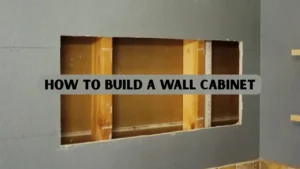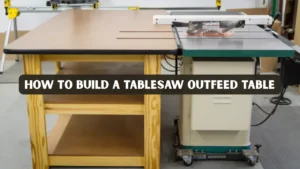A floor to ceiling bookcase is more than just storage; it’s a statement piece that can transform any room. Whether you want to showcase books, collectibles, or decorative items, a tall, custom-built bookcase not only maximizes vertical space but also adds a touch of elegance and personality.
If you’re a DIY enthusiast, building your own floor ceiling bookcase can be a rewarding project. In this guide, we will take you through the entire process step by step, including planning, tools, construction, and finishing tips. By the end, you’ll have a functional, stylish bookcase tailored perfectly to your space.
Key Takeaways:
- Floor to ceiling bookcases provide maximum storage and elevate room aesthetics.
- Accurate measurements, quality materials, and proper tools are essential for a sturdy build.
- Step-by-step DIY methods allow customization to any space.
- Finishing techniques like staining, painting, and protective coatings enhance durability and style.
Why Build a Floor to Ceiling Bookcase?
Building your own floor to ceiling bookcase has several advantages over buying a pre-made option:
- Maximizes Vertical Space: Utilizes the entire wall height, giving you more storage without taking up extra floor space.
- Customizable Design: Tailor the size, shelf spacing, and style to fit your room perfectly.
- Cost-Effective: DIY options often cost less than custom-built furniture from stores, especially if using reclaimed or plywood.
- Personal Satisfaction: Completing a project yourself adds a sense of accomplishment and allows you to create something unique.
- Enhanced Aesthetics: A well-built bookcase becomes a focal point, elevating the room’s décor and showcasing your personality.
Planning
Proper planning is the foundation of a successful DIY bookcase. A carefully designed plan ensures your project is safe, sturdy, and visually appealing.
Measuring Your Space
- Measure the height, width, and depth of the wall or area where the bookcase will sit. Accurate measurements are essential to ensure the bookcase fits perfectly and looks proportional in the room.
- Consider baseboards, molding, and electrical outlets, which might affect installation. Accounting for these details prevents fitting issues and allows for a seamless, professional-looking installation.
- Ensure there is at least 2–3 inches of clearance from the ceiling for easy installation and alignment. This space helps accommodate any unevenness in the ceiling and makes installation easier.
Tip: Draw a rough sketch of the wall and note measurements for reference. This helps avoid mistakes during cutting and assembly.
Choosing Materials
Selecting the right materials will impact durability, appearance, and ease of construction.
- Plywood: Affordable, sturdy, and easy to work with for shelves and vertical panels. It provides a strong foundation while keeping costs reasonable for DIY projects.
- Solid Wood: Offers a premium finish, ideal for visible parts and trim. It adds durability and a classic look that enhances the overall aesthetic of your bookcase.
- MDF (Medium-Density Fiberboard): Smooth surface, excellent for painting, but heavier than plywood. It is perfect for painted finishes and allows for a clean, modern appearance.
- Hardware: Wood screws, brackets, and shelf supports should be high quality to ensure stability. Using reliable hardware prevents sagging and maintains the structural integrity of the bookcase.
Pro Tip: Combine plywood for the inner shelves and solid wood for edges and trim for a professional look.
Design Considerations
- Decide on open shelves versus closed cabinets for the bottom section. Open shelves provide easy access and display space, while closed cabinets help hide clutter and protect items from dust.
- Determine shelf spacing depending on the type of books or items you plan to display. Proper spacing ensures functionality and prevents items from being cramped or unstable.
- Consider adjustable shelves for flexibility in storage. This allows you to change the layout as your collection or storage needs evolve over time.
- Think about style: classic, modern, or minimalist. Adding molding or trim enhances aesthetic appeal and gives the bookcase a polished, custom-built look.
Tools and Supplies Needed
Before starting, gather all necessary tools and supplies to make the building process smooth and efficient.
- Measuring tape and pencil
- Level and square
- Circular saw or table saw
- Drill and screwdriver set
- Sandpaper or power sander
- Wood glue
- Clamps
- Paintbrushes or rollers
- Stain or paint
- Safety gear: gloves, goggles, dust mask
Optional: A jigsaw for intricate cutouts or decorative panels.
Step-by-Step Construction Guide
Building a floor to ceiling bookcase involves multiple steps, but breaking them down makes the project manageable.
1. Building the Base
- Cut the base panel according to the width and depth measurements. Always double-check your measurements before cutting to ensure accuracy and avoid costly mistakes.
- Attach a bottom support panel using wood glue and screws for added stability. This extra support will prevent sagging and allow the bookcase to hold heavy books safely over time.
- Ensure the base is level; this is critical for vertical alignment of the entire bookcase. Use a spirit level and make adjustments as needed to create a perfectly even foundation for the structure.
Tip: Adding a toe-kick at the bottom gives a professional built-in appearance.
2. Constructing the Vertical Panels
- Cut the side panels to the full height of the wall minus clearance space. Measure carefully to ensure the panels fit perfectly and allow for any unevenness in the ceiling.
- Attach panels to the base using screws and brackets. Make sure the panels are securely fastened to provide a stable structure for the shelves.
- Check with a level to ensure panels are perfectly vertical. Adjust as necessary to maintain proper alignment before moving on to the next step.
Pro Tip: If your ceiling is uneven, sand or trim the top edge slightly for a flush fit.
3. Installing Shelves
- Measure and mark shelf positions on the vertical panels. Take your time to ensure even spacing and consistency across all shelves.
- Pre-drill holes to avoid splitting the wood. This will make it easier to attach brackets and ensure a clean, professional finish.
- Use shelf brackets or cleats to support each shelf. Make sure they are securely fastened to hold the weight of books and decorative items.
- Insert shelves carefully, checking for level alignment. Adjust as needed to ensure every shelf sits perfectly flat and stable.
Tip: Adjustable shelf brackets allow future flexibility if your storage needs change.
4. Adding Trim and Finishing Touches
- Add crown molding at the top to create a built-in look. This simple addition gives the bookcase a professional, custom-designed appearance.
- Apply edge banding or trim to the front-facing edges for a polished finish. It enhances the overall aesthetic and hides any rough cuts or plywood edges.
- Sand all surfaces thoroughly before applying paint or stain. Proper sanding ensures a smooth finish and helps the paint or stain adhere evenly.
Optional: Consider adding LED strip lights under each shelf for a modern touch.
Finishing Options and Tips
Finishing your bookcase not only improves appearance but also protects the wood.
Painting vs Staining
- Painting: Ideal for MDF or if you want a clean, modern look. Always use a primer first to create a smooth surface and ensure even coverage.
- Staining: Brings out natural wood grain, perfect for a classic or rustic feel. Apply multiple thin coats to achieve a rich, professional finish without drips.
Pro Tip: Apply multiple thin coats rather than one thick coat to prevent drips and uneven surfaces.
Protecting Your Bookcase
- Apply a clear polyurethane coat for added durability. This protective layer helps prevent scratches, stains, and general wear over time.
- For high-traffic areas, consider water-resistant finishes to prevent damage. These finishes make the bookcase more resilient against spills, moisture, and daily use.
- Regular dusting and cleaning help maintain the wood’s appearance over time. Using a soft cloth and gentle cleaner keeps the surface looking fresh and prevents buildup.
Case Study
- When Emily from Chicago built a custom bookcase in her living room, she was able to store over 300 books and display her collectibles without taking extra floor space. Her personalized design increased both storage capacity and room aesthetics significantly.
- John, a DIY enthusiast in Austin, used reclaimed wood to create a custom bookcase in his home office. The project cost under $400 and resulted in a sturdy, eco-friendly storage solution that he proudly showcased to friends and family.
Maintenance and Care
- Avoid overloading shelves; follow weight limits based on material and supports. Overloading can cause sagging or even damage the bookcase structure.
- Dust regularly using a microfiber cloth. This prevents buildup and keeps the wood looking clean and polished.
- Tighten screws and brackets periodically to maintain stability. Regular checks ensure the bookcase remains sturdy and safe for use.
- Reapply finish as needed to prevent wear and discoloration. Doing so preserves the wood’s appearance and extends the life of your bookcase..
Conclusion
Building a floor to ceiling bookcase is a rewarding DIY project that combines functionality with style. By carefully planning your space, selecting the right materials, and following step-by-step instructions, you can create a beautiful and durable piece that maximizes vertical storage and enhances any room.
Whether you prefer a classic wooden finish or a painted modern look, this project allows for full customization. With proper finishing and maintenance, your bookcase can last for years, becoming a centerpiece of your home library or living space.
Ready to start your DIY bookcase project? Gather your materials, plan carefully, and enjoy the process of crafting a piece that’s uniquely yours!
FAQs
How much does it cost to build a floor ceiling case?
Costs vary depending on materials and size. A standard DIY bookcase using plywood may cost $200–$500, while premium solid wood options can exceed $1,000.
Can I build this bookcase without professional tools?
Yes, but essential tools like a circular saw, drill, and sander make the process faster and safer. Renting tools is also an option for occasional DIYers.
How long does it take to build a bookcase?
On average, a DIY project can take 2–4 days including cutting, assembly, sanding, and finishing, depending on complexity and skill level.
Can I customize the shelves for different items?
Absolutely! You can create adjustable shelves or mix open shelves with closed cabinets to store books, collectibles, or electronics.
How do I ensure the bookcase is level and stable?
Use a spirit level throughout construction. Secure panels with screws, brackets, and wood glue. Adding a backing panel also improves stability.




